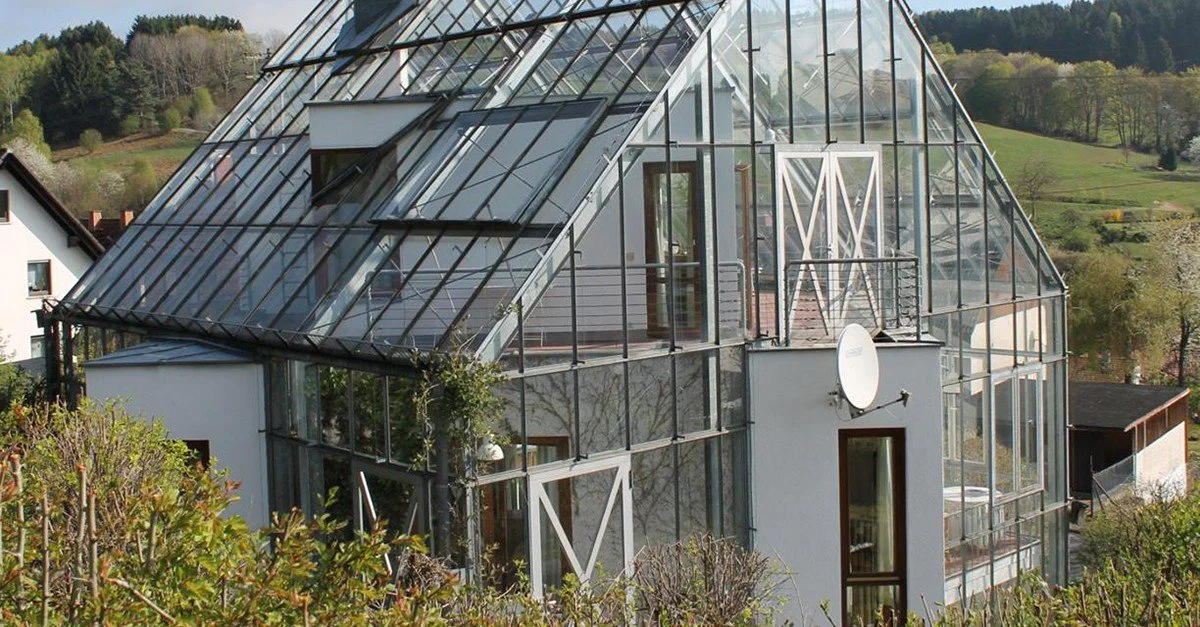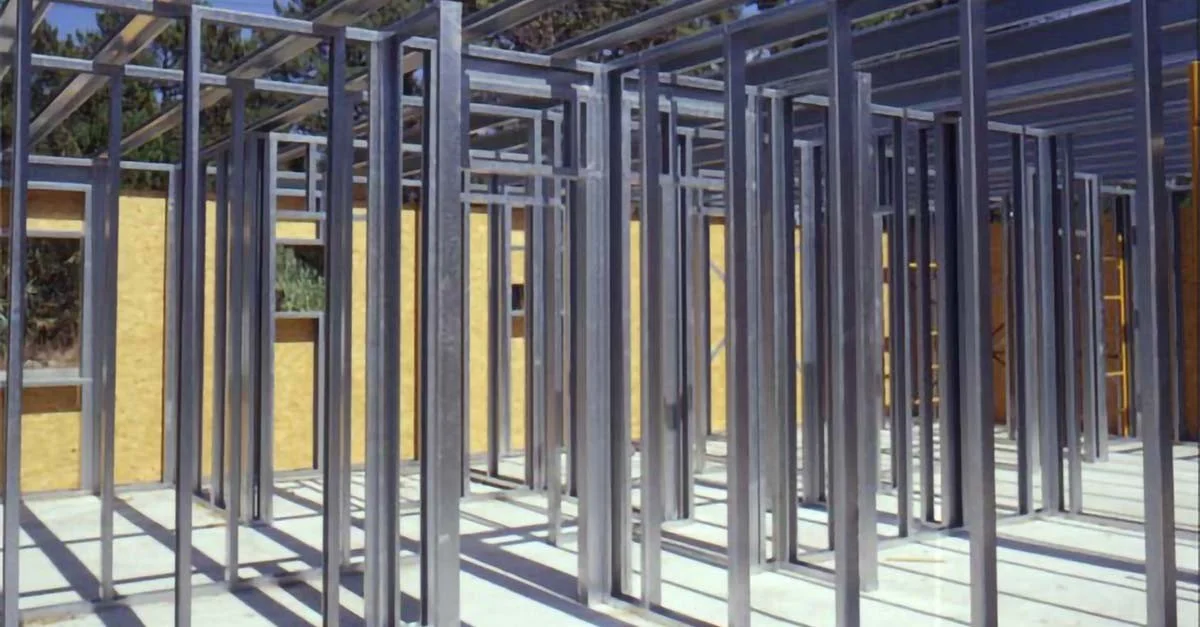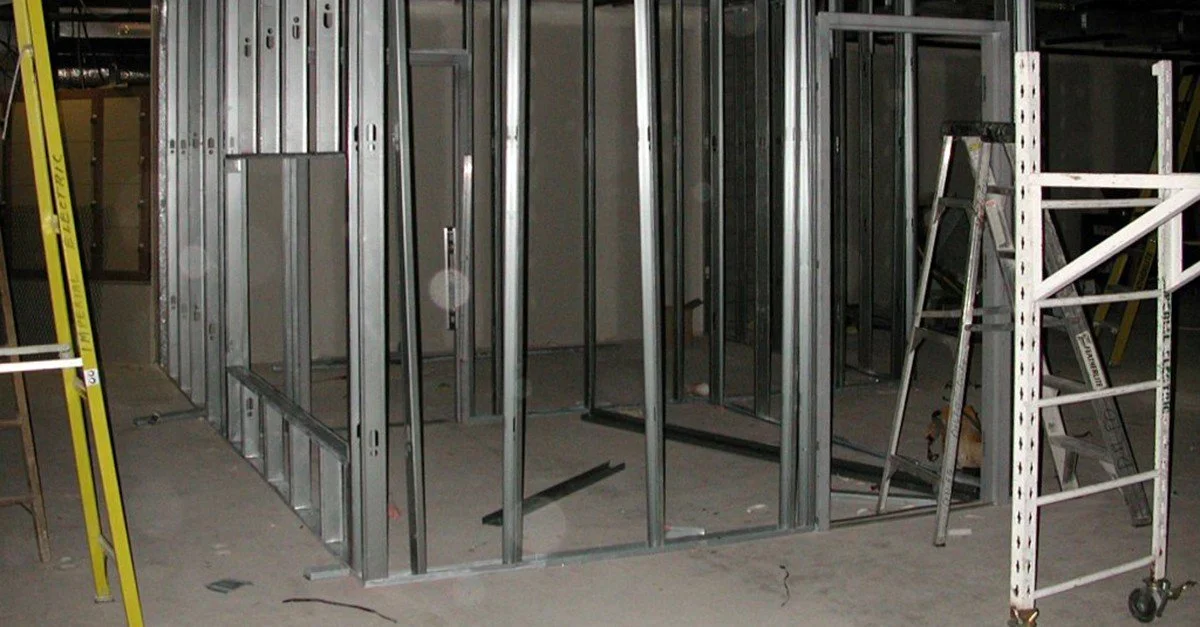Construction in LSF: 'Light Steel Frame' is becoming increasingly popular
Building with light steel is an innovative method that is gaining growing attention in the construction of houses in Portugal.
Trissi1234_cc_by_s.4
The acronym LSF stands for Light Steel Frame, which in Portuguese means “light steel construction.” The LSF system is characterized by a lightweight structure made of galvanized steel profiles, allowing for dry construction with fast execution times and high sustainability.
LSF houses are built using light steel as the main structural material. The steel profiles are coated to provide greater rigidity to the structure and to support insulation and waterproofing materials, as well as the necessary interior and exterior finishes.
Although steel is the most widely used construction material in the world—due to its versatility, stability, and durability—masonry construction remains the predominant method in Portugal.
Steelman_cc_by_sa_2.5
LSF Construction vs. Masonry Construction
When we talk about masonry, we refer to the set of materials—bricks, stones—used to build the walls or foundations of a building. Masonry is typically combined with reinforced concrete, which, in simple terms, is concrete reinforced with steel bars, fibers, or other materials.
Due to the differences in materials and application methods, LSF and masonry construction have distinct characteristics worth noting.
LSF Construction
Lighter, making it ideal for single-story or low-rise buildings
The Light Steel Frame system is fully sustainable, and the steel used is 100% recyclable
Faster construction time
Steelman_cc_by_sa_2.5
Masonry Construction
Allows the construction of taller buildings without compromising structural stability
Uses materials that may be harmful to the environment, such as bricks, cement, and sand
Slower construction process
Despite masonry remaining the most common method, light steel construction is steadily gaining ground in the building industry.
steel_cc_by-sa_2.5
Light Steel Construction: Advantages
Safety – Although it is a lightweight structural system, that does not make LSF houses less safe. This type of construction has a structure with high energy absorption capacity and, thanks to the material’s flexibility, offers excellent seismic resistance. In addition, LSF buildings demonstrate high fire resistance since the materials used are non-combustible.
Insulation – Thanks to the materials used, such as mineral wool and plasterboard, LSF houses offer excellent thermal and acoustic insulation, improving energy efficiency and overall comfort.
Speed of Construction – Due to the simplicity, low weight, and modular dimensions of the system, light steel constructions are faster to build than traditional methods.
Sustainability – The materials used in LSF buildings are recyclable or eco-efficient, minimizing environmental impact.
Durability – The light steel structure is extremely strong and has a lifespan of several hundred years. Moreover, as the materials are highly resistant to mold and fungi, minimal maintenance is required over time.
Cost Efficiency – In addition to low maintenance requirements and high energy efficiency, LSF houses are more economical than traditional ones — both in construction costs (less material used) and transport costs (lighter weight and lower volume).
For example, if you’re considering building a three-bedroom LSF home in Portugal, turnkey prices start around €119,000. The cost per square meter typically ranges from €850 to €1,050/m².
p199_public_domain_via_wikimedia commons
While the advantages of this construction method are highly appealing, it’s important to note that LSF houses have certain limitations, such as not being suitable for very tall buildings, as this could compromise structural stability.
Before making a decision, it’s essential to research these solutions thoroughly to clarify all doubts and give this innovative construction method a fair opportunity.
Source: https://www.idealista.pt/news/imobiliario/habitacao/2021/11/02/49498-construcao-em-lsf-o-light-steel-frame-e-cada-vez-mais-popular





